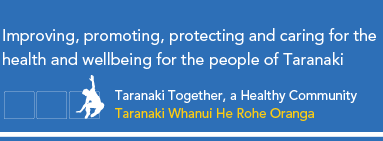Sepsis programme at Taranaki DHB a New Zealand first
30 June 2021
Taranaki DHB is leading the way with a new programme of work aimed at early detection and treatment of sepsis.
Sepsis (mate whakatāoke) is ‘blood poisoning’ or ‘toto pirau’ – sometimes called septicaemia. It’s a life-threatening condition that arises when the body’s response to an infection injures its own tissues and organs.
Taranaki DHB’s sepsis project manager, Ehsan Ullah, says sepsis is hard to describe and is not easy to detect, but it’s killing our whānau.
“Māori and Pacific peoples are affected by sepsis 2-3 times more commonly than others, and usually have worse outcomes.
“To help raise awareness for people living in our community and better educate our healthcare professionals to identify sepsis, and to improve patient outcomes, Taranaki DHB has committed to become the pilot site of the Sepsis Ready Programme,” says Ehsan.
The national programme is being launched at Taranaki Base Hospital and Hāwera Hospital Emergency Departments on Wednesday 30 June. It was developed by NZ Sepsis Trust in collaboration with Waikato DHB and aims to ensure that hospitals are equipped for early detection and equitable treatment of patients with sepsis.
Clinical staff will be provided with screening tools to help identify sepsis, and to assist with articulating their conversations with senior medical staff when escalating their concerns.
Ehsan says “Research shows early recognition and treatment of sepsis reduces the length of time a patient will spend in hospital, and improves patient outcomes overall.”
Patients and staff will be educated to look for signs of sepsis by a series of measures, including:
- Feeling sleepy
- Blotchy skin
- Haven’t been to the toilet in a while
- Hard to breathe
- Can’t stop shivering
- Feel like you’re going to die.
Ehsan says the programme will be great for the Taranaki community and has been designed to have a strong equity focus where all patients no matter what ethnicity will receive the same equitable care and outcomes.
“In particular, we have worked with Taranaki DHB’s Māori Health team to identify areas of focus for the Māori population. Making sure we’re reaching this population is important to us due to Māori more commonly becoming unwell with sepsis.”
Background information on sepsis:
- Sepsis is a life-threatening complication of infection that needs urgent treatment.
- Sepsis occurs when your body reacts to an infection in an uncontrolled way, causing damage to vital organs.
- Sepsis is a medical emergency just like stroke or heart attack. It can lead to a serious injury and death.
- If someone is having sleepiness, extreme shivering, passing no urine (mimi), breathlessness, mottled or blotchy skin, it feels like ‘I’m going to die’, dial 111, tell them what’s happening and ask ‘could it be sepsis.
- For more information: https://www.sepsis.org.nz/
Last updated: Wednesday, June 30, 2021


